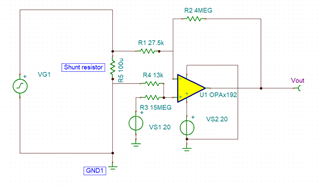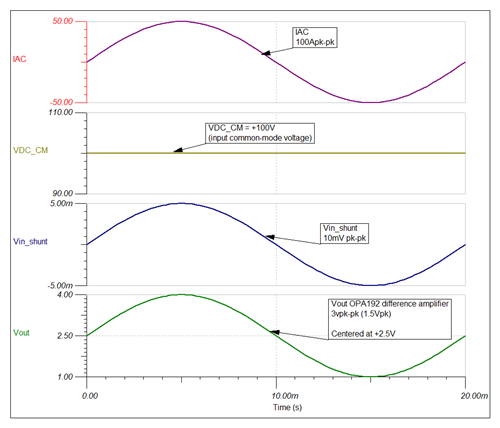Other Parts Discussed in Thread: OPA2192, INA296A
Hi,
I am using an op-amp configuration as shown in the attached image for converting 0.01V pk-pk sine waveform (ac output current of the inverter, around 100A pk-pk, derived from the shunt resistor) to a level shifted and amplified sine waveform with around 1.5V peak i.e. 1V as minima and 4V as maxima to be utilized for the AIN pin of the driver IC UCC21755 (AIN pin can only sense voltages between 0.5V to 4.5V) for further sensing. Can you give your opinion on the circuit (which I simulated on TINA software, and seems to be working fine there) or issues I could face with it. One issue I can think is at 1A of output of the inverter, as the voltage across the shunt resistor is very low, the resulting output of the opamp might not be accurate. Other issue I see on TINA simulation platform is that if I do not connect GND 1 as shown in image, I do not get the desired output. Is the grounding issue a limitation of TINA or is the current sensing of the output of the inverter not possible as there is no ground element to be connected on either end of the shunt resistor.





